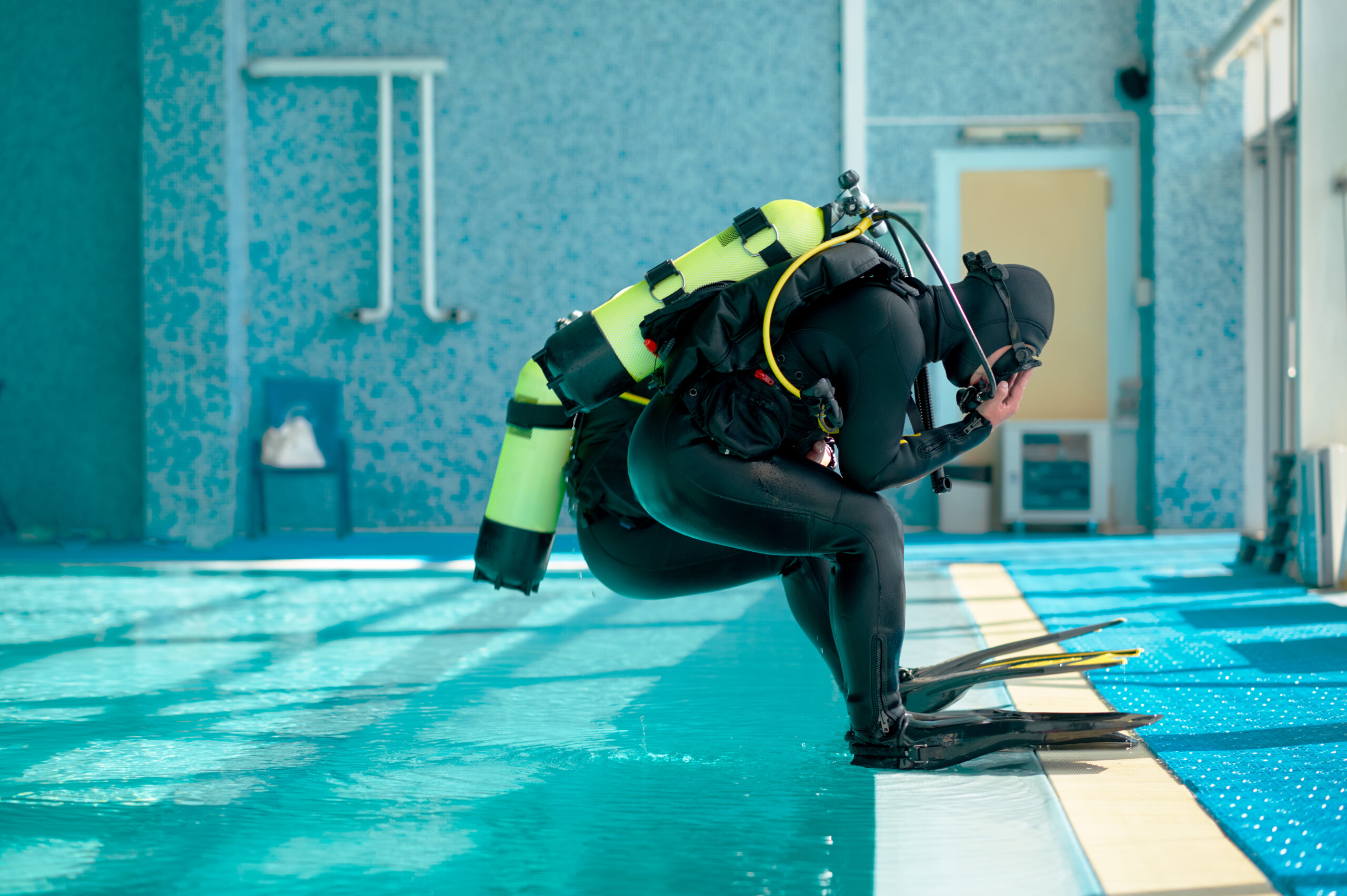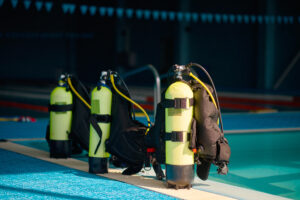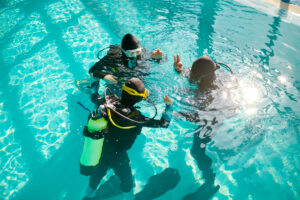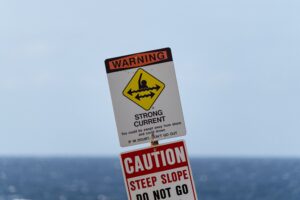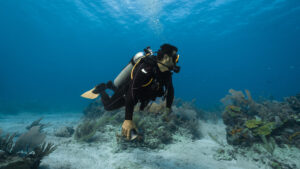What is a Backward Roll Entry when Scuba Diving?
The backward roll entry is a popular technique used by scuba divers to enter the water from a sitting position on the side of a boat. This method allows for a controlled and smooth entry into the water, minimizing the risk of damaging or dislodging equipment. This article will discuss the importance, technique, safety considerations, and alternatives to the backward roll entry.
Background and Importance
The backward roll entry is one of several methods scuba divers use to enter the water, with others including the giant stride, the controlled seated entry, and the James Bond roll. The backward roll is particularly advantageous for divers entering the water from small boats or vessels with low gunwales, as it minimizes the risk of accidentally striking the boat while entering the water. The technique’s primary benefit is its ease and simplicity, allowing divers of all skill levels to safely and efficiently enter the water with minimal disruption to their equipment or the marine environment.
Technique
The backward roll entry consists of the following steps:
Preparation
Before attempting the entry, ensure that all equipment is properly donned and secured, including the buoyancy compensator (BC), regulator, mask, and fins. Check that all hoses and straps are free from entanglement and that the tank is securely fastened to the BC.
Positioning
Sit on the edge of the boat with your legs hanging over the side, facing away from the water. Place both hands on the mask to hold it securely against your face, ensuring a proper seal. Keep your fingers on the bottom of the mask and your thumbs on the strap to prevent it from slipping. At the same time, grip the regulator or second stage with your teeth to ensure it remains in place during the entry.
All clear
Before executing the roll, check the surrounding water for any potential hazards, such as other divers, boats, or marine life. Signal to your dive buddy or boat crew that you are about to enter the water and wait for an all-clear signal in return.
The roll
While maintaining a firm grip on your mask and regulator, lean backward and roll into the water. As you roll, tuck your chin into your chest to protect your head and neck. The goal is to enter the water shoulders and tank first, allowing your body to follow in a smooth, continuous motion.
Orientation
Once submerged, immediately orient yourself by locating your dive buddy or the boat. Check that your equipment is still in place and functioning properly before beginning your descent.
Safety Considerations
The backward roll entry, like any scuba diving technique, involves some inherent risks. To minimize these risks, divers should:
- Always perform a pre-dive safety check to ensure that equipment is functioning correctly and securely fastened.
- Check the surrounding water for potential hazards before initiating the roll.
- Avoid holding your breath during the roll, as this can lead to lung overexpansion injuries. Instead, breathe normally through the regulator.
- Practice the technique in a controlled environment, such as a swimming pool or shallow water, before attempting it in open water or from a boat.
Alternatives to the Backward Roll Entry
While the backward roll entry is widely used and versatile, some situations may call for alternative methods of water entry:
Giant Stride
This method is ideal for divers entering the water from a stable platform, such as a dive boat with a dive platform or a dock. The diver takes a large step off the platform, propelling themselves into the water feet first.
Controlled Seated Entry
This method is suitable for divers entering the water from a low platform or a rocky shoreline. The diver sits on the edge of the platform or shore, facing the water, and slowly slides or
eases themselves into the water while maintaining control of their equipment.
James Bond Roll
Similar to the backward roll entry, the James Bond roll is executed from a seated position on the side of the boat. However, the diver faces the water and performs a forward roll into the water, leading with their head and shoulders. This method is less common but can be useful in certain circumstances, such as when the diver needs to maintain visual contact with the water or when there is limited space on the boat.
Sliding Entry
This method is often used by divers entering the water from a boat equipped with a sloping stern or when entering from a rocky shoreline. The diver sits on the edge of the boat or shore, facing the water, and slides down the slope into the water. This method minimizes the impact on the diver’s equipment and the marine environment.
The backward roll entry is a widely used and effective method for scuba divers to enter the water from a boat or low platform. By properly executing the technique and adhering to safety precautions, divers can minimize the risk of equipment damage or injury while enjoying a smooth and controlled entry into the water. As with any scuba diving skill, practice and familiarity with the technique are essential for success. Divers should also be aware of alternative entry methods and be prepared to adapt their approach based on the specific conditions and circumstances of each dive.

